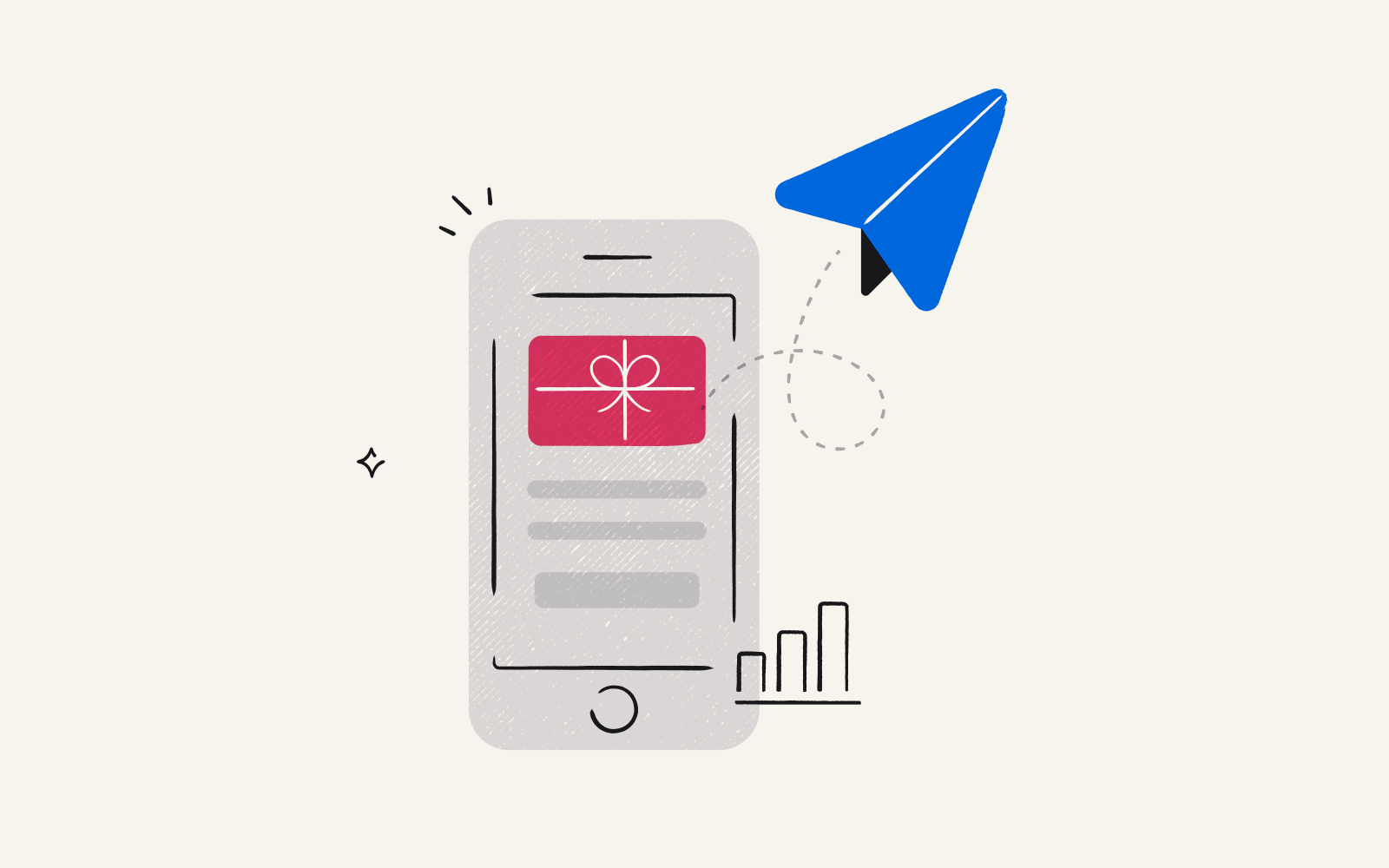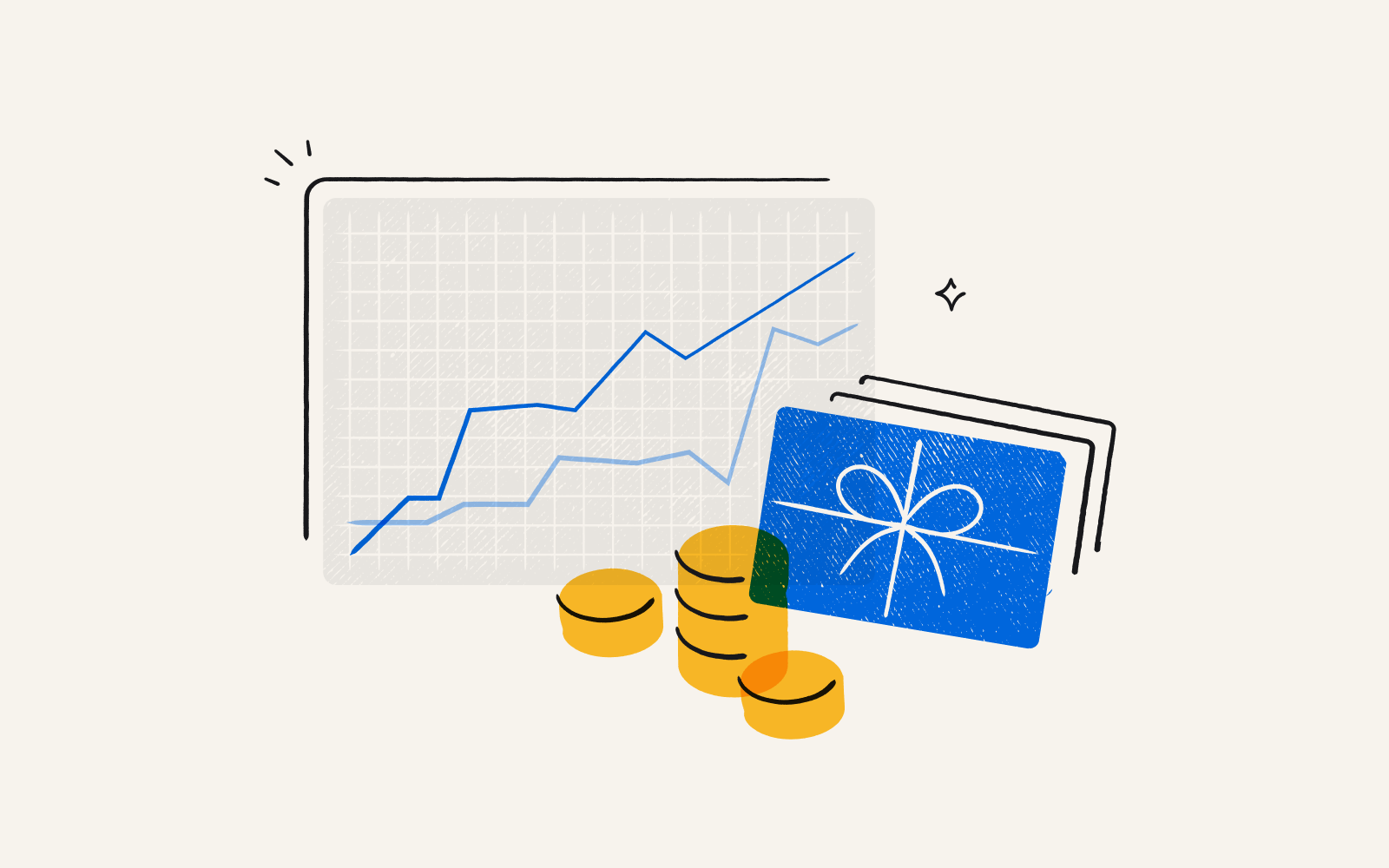A guide to survey incentives for marketers
By Kate Monica|6 min read|Updated Jan 26, 2024

Offering survey incentives is the most effective way to solicit more responses to your marketing surveys while also building brand reputation. They increase survey response rates by up to 19% (Göritz, 2006), and create a positive association between your customer and your company.
There are dozens of ways to use incentives to glean valuable insights from prospects and customers, and several different incentive types to choose from. Deciding what kind of incentive best suits your goals depends on your audience, what you’re asking them to do, and the kind of information you’re trying to learn.
In this guide, we’ll break down everything you need to know about survey incentives and how to use them to bolster your marketing initiatives with qualitative and quantitative customer insights.
And if you’re already in the process of setting up incentives for your marketing surveys, use our incentive calculator to determine exactly how much to pay participants.
What is a survey incentive?
A survey incentive is a gift you offer participants who take the time to answer your questions or provide information.
Offering participants a monetary or non-monetary incentive in exchange for their responses helps to:
Increase response rates
Increase the likelihood that participants will actually complete your survey
Solicit higher-quality responses (Göritz and Luthe, 2013)
Examples of survey incentives include gift cards, cash, coupons, discounts, and free products or services. Ultimately, the type of incentive you choose depends on your survey's goals, target audience, and budget.
Why should marketers consider using survey incentives?
Without incentives, you’ll likely get limited, low-quality responses. That’s because people often have lots of things competing for their attention.
On average, people receive up to 121 emails daily. Naturally, we all have to decide how we allocate our attention. Typically, we prioritize activities that are either urgent or offer instant gratification.
These are psychological predispositions based on the principle of urgency and hyperbolic discounting, respectively.
The principle of urgency means we tend to pursue urgent tasks over important ones. Hyperbolic discounting describes our tendency to prioritize short-term over long-term gains. We discount the value of benefits that will take a long time to come to fruition, and we exaggerate the value of benefits we’ll experience soon.
When you ask for a product review or send a survey about brand perception, it doesn’t trigger their sense of urgency. But if you pair the survey request with an incentive, it does activate hyperbolic discounting.
In other words, you’re offering participants instant gratification – take a survey, get a payout.
Lyssna, a user research platform, understands this, so they used survey incentives to stand out in a sea of requests for information and feedback.
Claire Brown, Director of Marketing at Lyssna, wanted to incorporate customer insights into a company-wide rebrand.
To get a large volume of responses and higher-quality feedback, Claire used Tremendous to compensate research participants for offering input.
The result?
Lyssna received thousands of helpful insights from 150 customers that helped inform one of their most high-impact marketing initiatives.
Types of survey incentives
There are three main types of incentives: monetary, non-monetary, and social. Each has its own benefits: some are especially budget-friendly, others particularly motivating for recipients.
Monetary incentives
Monetary incentives are financial rewards you offer participants in exchange for their time and attention.
Some examples include cash prizes, checks, direct bank or electronic transfers, prepaid debit cards, and gift cards.
Monetary incentives are very common as a way to entice people to fill out surveys. It’s easy to ignore a request for 5-10 minutes for your opinion, but a lot harder if there’s a payout attached.
But not all monetary incentives are created equal.
It stands to reason, and research proves, that people prefer the option to pick their own gift card, rather than being stuck with one for a specific retailer they may or may not like. And they prefer prepaid Visa cards over gift cards to specific retailers.
Above all, everybody wants money. According to our research with The Decision Lab, people value money more than any other kind of incentive. Direct cash transfers via Venmo, PayPal, or bank transfer are the most attractive incentives for the vast majority of people.
If you’re not sure which type of monetary incentive your specific pool of survey participants prefers, Tremendous can help. With Tremendous, you can offer participants more than 1,700 redemption options — including gift cards, Visa cards, and transfers. Plus, Tremendous supports your brand with both a recipient-friendly redemption process and custom-branded messages with your logo and colors. All of these factors reflect well on your company.
When to use monetary survey incentives
Use cash incentives when:
The insights you want to gather will have a significant impact on marketing decisions or goals
You’ve gotten low response rates in previous surveys
You need answers quickly
Your survey requires a significant time commitment from participants
You’re targeting hard-to-reach audiences (busy professionals, etc.)
This is by no means an exhaustive list. The larger point is that monetary incentives are a great option if you want to increase the likelihood of a successful survey.
Non-monetary incentives
Non-monetary survey incentives are rewards that don’t involve financial compensation. They’re often tailored to your target audience’s preferences.
Examples of non-monetary incentives for survey participation include free products, swag, discounts, access to exclusive content, charitable donations, or the chance to win prizes via lottery.
When to use non-monetary incentives
Use non-monetary incentives when you want to:
Strengthen your relationship with existing customers
Encourage current or past participants to take part in future surveys
Stay under a strict or small budget
Solicit helpful feedback or insights that are interesting in some way, but have little impact on the business
If you’re running a survey to inform a blog post, looking for a few more quotes to include on your website, or want someone to answer a few questions for a case study, it may make sense to send along some swag or offer a discount in exchange for participation.
While non-monetary incentives are often cheaper, they’re not always received with much enthusiasm. Discounts in particular can negatively impact brand perception, while swag often ends up in the trash.
Social incentives
Social incentives involve acknowledging and appreciating survey participants in a non-material way. This includes giving participants certificates of appreciation, badges, or public recognition for their contributions. Likewise, you can offer participants unique experiences. For example, you can allow them to join your Slack community, or invite them to an exclusive event.
When to use social incentives
Use social incentives if:
You have a thriving community or valuable educational offerings. For example, Salesforce has its Trailhead program and related Trailblazer community, and Notion holds community events for avid users and contributors. (Fun fact: Notion uses Tremendous to distribute grants to event organizers.)
You want to bolster a sense of community among survey participants and customers
You truly have zero budget
Whether it makes sense to offer social incentives hinges on how much you’ve invested in content and community. If you haven’t built up a robust community or don’t yet offer educational content or courses, social incentives likely won’t have the desired impact. You can also certainly pair these with other incentives: a monetary incentive plus a thank-you is a great combo.
Determining how to send incentives
Once you’ve decided which kind of incentive makes the most sense for your goals and budget, it’s time to figure out whether you want to send incentives in the form of a lottery, a guaranteed prepaid incentive, or a guaranteed post-paid incentive.
Again, each has different benefits and drawbacks.
Guaranteed prepaid incentives
Guaranteed prepaid incentives are incentives that participants receive upfront, before they take your survey.
The benefit of prepaid incentives is that they’re the most effective at soliciting responses. People are more likely to take part in your survey if you’ve given them the incentive upfront because it triggers the principle of reciprocity.
The principle of reciprocity describes our tendency to want to offer something in return for what we’re given. If you give someone a $20 digital incentive upfront, they’ll want to take your survey as thanks.
The downside of this approach is that it can be a money suck. While more people will take your survey if you send prepaid incentives, you’ll spend more money on incentives than you would if you only paid the people who actually fill out the survey, assuming you offer the same amount.
With prepaid incentives, you pay all potential respondents, rather than just the portion of people who actually do respond.
Famously, for decades the media research company Nielsen has sent small amounts of cash in envelopes to encourage people to take a survey. (They also pay extra once you’ve completed it.)
Guaranteed post-paid incentives
Guaranteed post-paid incentives are the most common type of survey incentive. They’re given to participants after they’ve completed a survey.
The benefit of this is obvious: you only have to pay people who actually do what you want them to do. And they’re still very attractive to participants, increasing response rates by up to 19%.
If you want to know exactly how much to pay survey participants for their contributions, check out incentive calculator.
Lotteries
Lotteries offer a chance of a bigger payout, rather than a more modest guaranteed one. An example of a lottery is when you have anyone who visits your booth write their name and email on a ticket for a chance to win $500.
You can structure your lottery to have one winner, five winners, ten – whatever your budget allows for.
The benefit of lotteries is that they can be structured to be less expensive than guaranteed incentives. You only have to offer an incentive to one person, or a handful of participants.
Even if the reward is larger than it would be if everyone got an incentive, you can pick a denomination or prize that’s less expensive than paying each person individually.
The downside is that lotteries aren’t as effective as small, guaranteed incentives. In fact, some evidence suggests they have little impact on study participation rates relative to no prize at all.
Ultimately, lotteries may be the best option for companies on a tight budget, but guaranteed incentives are better.
Key takeaways
Offering customers and prospects incentives for participating in marketing surveys can help you:
Attract a larger sample size
Increase the number of high-quality responses you receive
Ensure participants complete the entire survey.
The most attractive incentive you can send is a guaranteed prepaid monetary incentive. But post-paid incentives make the most sense for most companies due to budget constraints.
The simplest way to send incentives to customers and prospects around the world is with Tremendous. Give participants the choice of more than 1,700 redemption options, from Venmo transfers to Amazon gift cards to direct bank transfers.
Send your first incentive in minutes, or chat with our team about how Tremendous can help you build data-backed marketing initiatives.
Published January 26, 2024
Updated January 26, 2024


